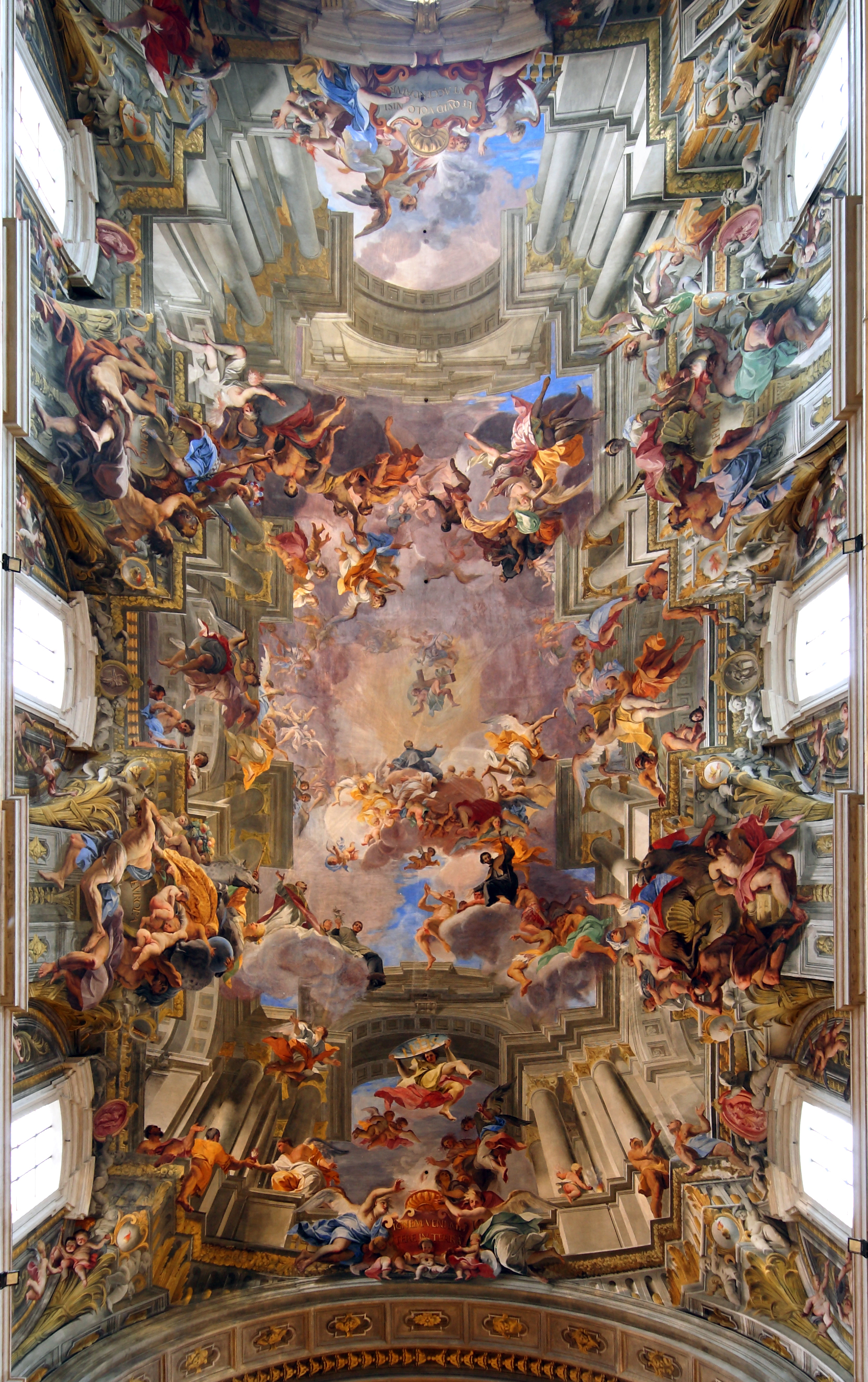After discussing the architecture and sculpture of the Baroque period in Rome, today we will talk about painting.
Pozzo: Master of “Illusionistic Painting”
- Andrea Pozzo (1642-1709) was an important painter, architect, and art theorist of the late Baroque period, and one of the most famous figures of the Baroque era. He was a highly original painter, known for his magnificent murals, especially his ceiling paintings, which left a powerful visual impact. Pozzo excelled in “illusionistic painting,” creating a strong sense of three-dimensionality on a flat surface.
- Pozzo, full name Andrea Pozzo, was a Jesuit priest and the only noteworthy painter of the late Baroque period after figures like Caravaggio and Guercino. This does not mean that there were no paintings in Rome at the time, but rather that the function of painting had undergone a significant shift. In the mid-17th century, Rome began to diverge from the Renaissance period. Prior to this, the functionality of painting was strongly tied to commissions from the church, government, or wealthy individuals. By the late Baroque period, painting became more decorative, specifically serving the purpose of architectural embellishment.
- The reason why Pozzo’s late Baroque paintings became an important part of architectural decoration is due to the societal context of the Counter-Reformation. Under the leadership of the Jesuits, a wave of church construction was initiated, and many buildings required internal decoration. Thus, painting became the most convenient tool for this purpose. The function of painting in society shifted from mere artistic commissions to interior decoration, highlighting the decorative nature of Baroque art.
- Pozzo’s greatest strength was in decorative ceiling paintings, which were extremely popular at the time. The main purpose of these paintings was to expand the influence of religion. The church aimed to make those who entered the church feel the power of religion, strengthen Catholic dominance, and elevate the position of faith in people’s hearts. Therefore, the entire church, from its exterior to its interior, needed to embody this goal. Faced with the powerful opponents of the Protestant Reformation, the art of the Renaissance, which conveyed a sense of “tranquility,” was not strong enough. The new church decorations aimed to have a greater “promotional” effect and create a feeling of heaven. As a result, ceiling paintings became the mainstream during that period.
- The most remarkable feature of Pozzo’s ceiling paintings was the sense of illusion they created. He could paint a false dome on a flat ceiling, and his most famous work is the ceiling painting in the Church of St. Ignazio. This painting was actually created on a flat ceiling, but Pozzo used the proportions of columns, windows, and other lines to create a visual illusion, making people believe that there was an expansive space above the ceiling. The level of realism in this painting is truly awe-inspiring.
- The small dome next to the ceiling painting in the Church of St. Ignazio was also painted by Pozzo and is equally stunning, as he created the effect of an arch on a flat surface. At that time, Europeans preferred circular domes in architecture, but due to the difficulty of construction, such buildings were rare. Pozzo used painting to create “virtual reality,” satisfying this aesthetic preference. He also used metallic brass colors to create the effect of a golden, shining dome, which was extremely impressive.
- In addition to his ceiling works, Pozzo also created a famous corridor painting, where he applied the technique of illusionistic painting. When people walked into the corridor, they would notice that although the painting was viewed from the side, the proportions of the figures on the walls remained unchanged and normal, rather than appearing distorted due to the angle of view. However, when viewed head-on, the figures in the painting appeared overly bulky. Pozzo cleverly utilized the change in perspective as people moved, providing a unique visual experience.
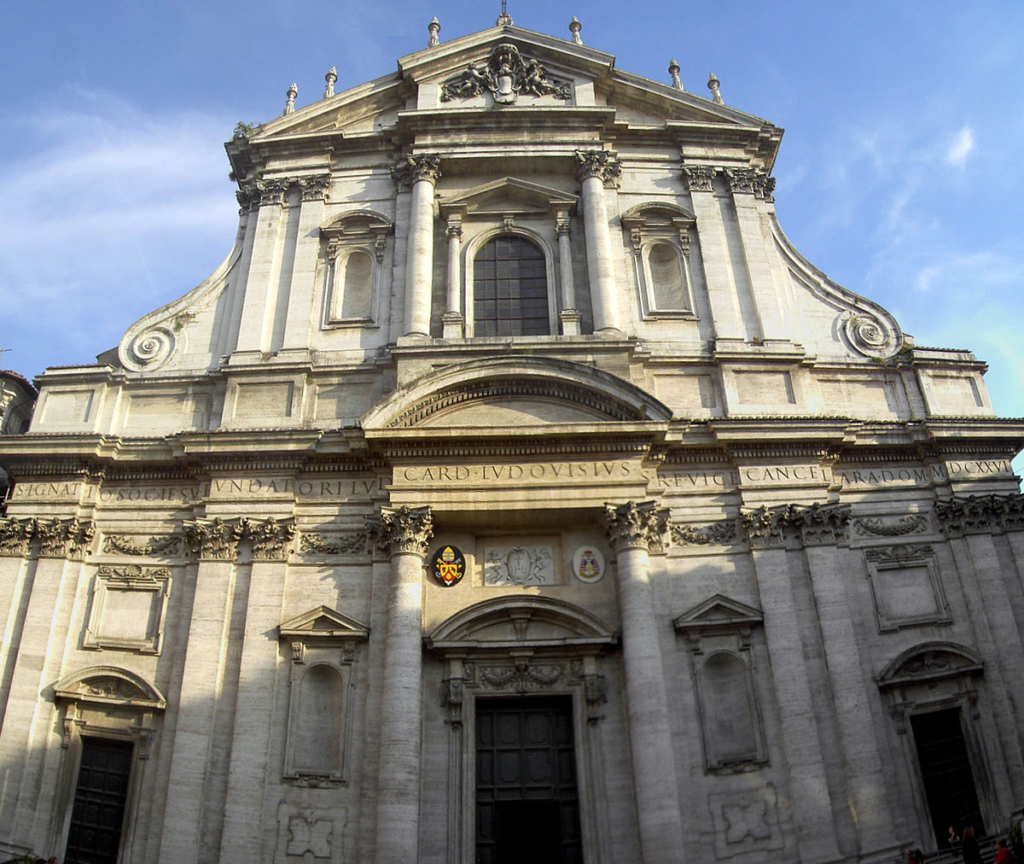
Church of St. Ignazio, located in Rome

Pozzo – Panorama of the ceiling painting in the Church of St. Ignazio. Through the changes in the proportions of columns, windows, and other lines, a visual illusion is created, making it appear as if there is an endlessly extending space above the ceiling.

Pozzo – Detail of the ceiling painting in the Church of St. Ignazio, with the central figure being Ignatius of Loyola, founder of the Jesuits.
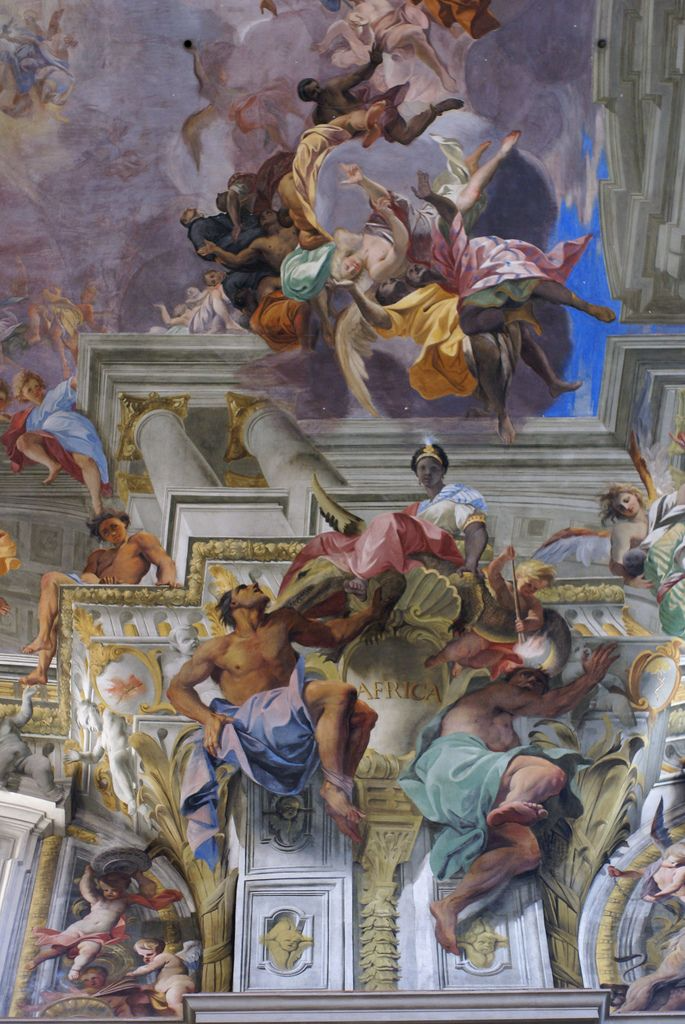
Pozzo – Detail of the ceiling painting in the Church of St. Ignazio, representing Africa.

Pozzo – Detail of the ceiling painting in the Church of St. Ignazio, representing Asia.
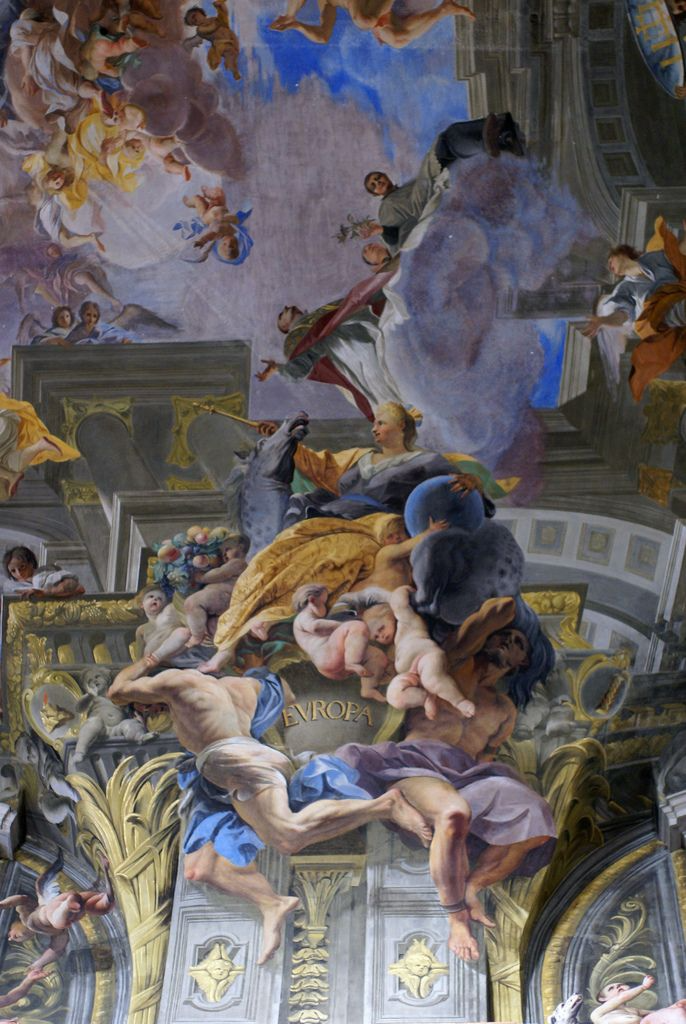
Pozzo – Detail of the ceiling painting in the Church of St. Ignazio, representing Europe.
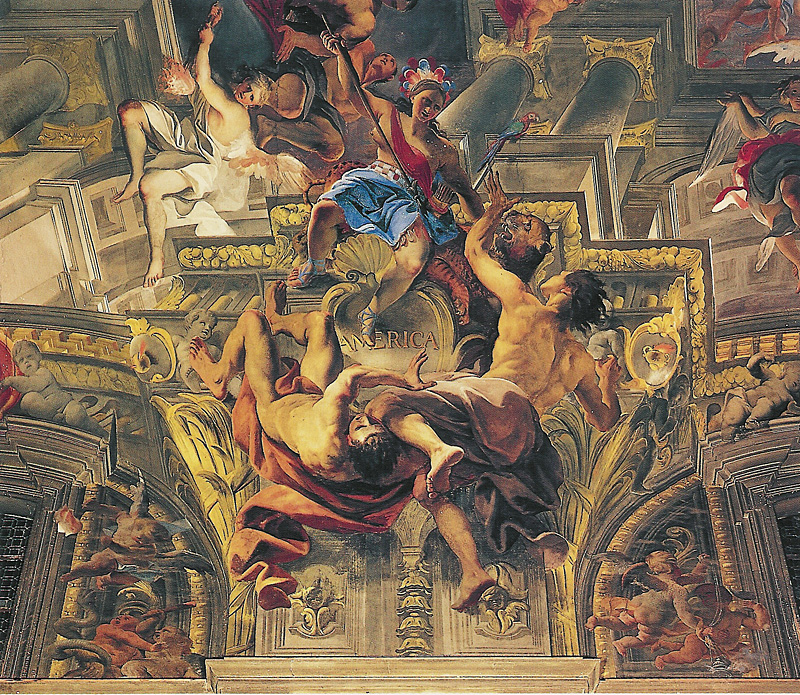
Pozzo – Detail of the ceiling painting in the Church of St. Ignazio, representing the Americas.
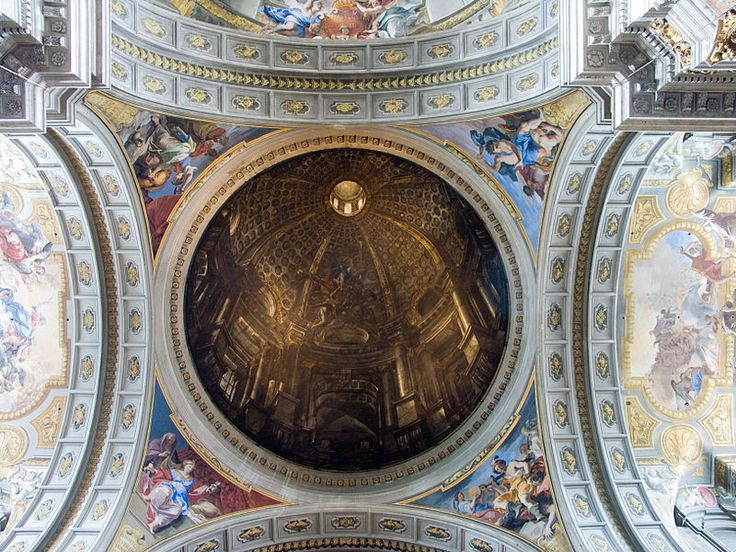
Pozzo – Small dome painting in the Church of St. Ignazio, where the effect of a dome is painted on a flat surface, using metallic brass colors to create a shining effect.
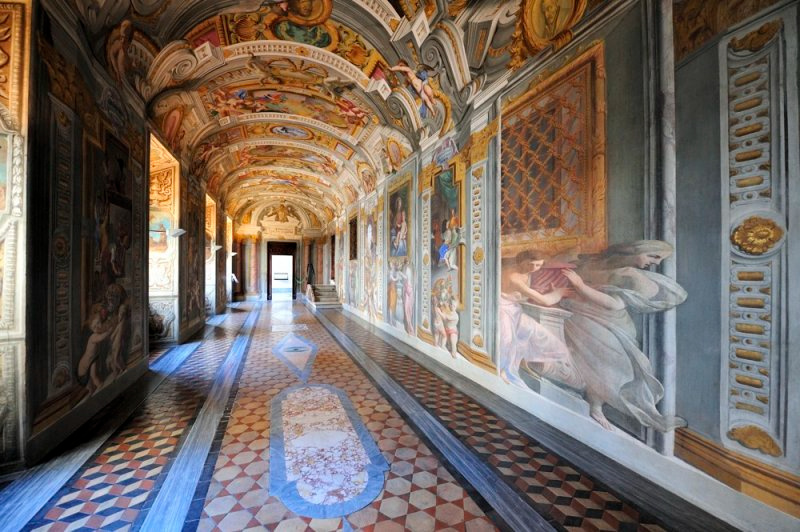
Pozzo – Panorama of the corridor. From the side, the boy on the right wall is in normal proportion.
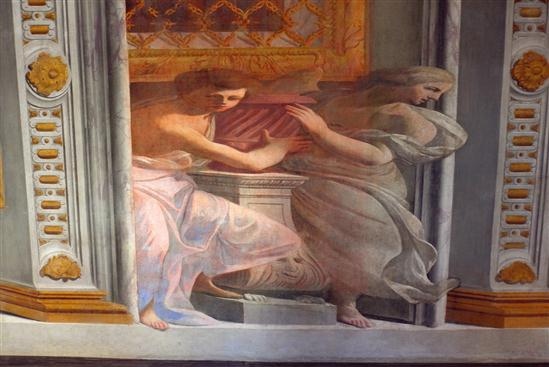
Pozzo – Detail of the corridor. From the front, the boy’s proportions appear horizontally exaggerated.
Tips
Don’t miss the small churches in Rome
Rome is a treasure trove, and you should never miss out on anything just because some buildings may seem unremarkable or not grandiose. Many of the churches built by the Jesuits, including the Church of St. Ignazio that we’re discussing today, may look ordinary on the outside, but often hide remarkable treasures and have stunning interiors. So, make sure you don’t overlook them!
